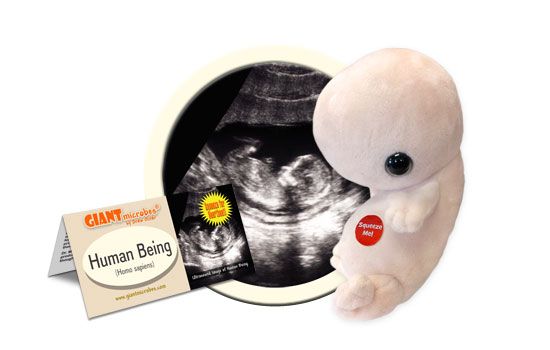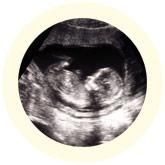Human Being (Homo sapiens)
Out of Stock
And squeeze the tummy of our human being and see and hear its glowing little heart beat!
Product Details
Additional Information
| Sizes | Giantmicrobes are based on actual microbes, cells, organisms and other critters, only 1,000,000 times actual size! Gigantic (GG) 16-24" XL (XL) 10-15" Original (PD) 5-8" Keychain (KC) 2-4" with clip |
|---|---|
| Materials | Plush from all new materials. Stuffed with polyester fiber fill. Surface washable: sponge with water & soap, air dry. |
| Packaging | Each plush microbe includes a printed card with fun, educational and fascinating facts about the actual microbe or cell. |
| Safety | Every product meets or exceeds U.S. and European standards for safety. For ages 3 and up. |
All about Human Being (Homo sapiens)
FACTS: Everybody starts out small – very small! A human egg cell is only about the size of the period at the end of this sentence. But if the egg is fortunate enough to become fertilized, an amazing and magical journey from the microscopic world to the world that we know begins.
In the first few days, the fertilized egg, or zygote, travels down the mother’s fallopian tube dividing many times. It soon becomes a raspberry-shaped morula and then a hollow blastocyst. After about a week, the embryo is implanted in the uterus where its mother can help it to survive.
During the second week, the embryonic cells begin to differentiate into the specialized cells of which we are all made – and growth proceeds rapidly.
About three weeks after conception, the heart begins to beat. (It can be heard on an ultrasound after about 8 – 10 weeks.)
By the fourth week, facial features are beginning to appear, and arms and legs are just beginning to stretch out.
By the sixth week, fingers and toes are starting to form, and in the seventh week, the eyes are made.
By week eight, the human being is a little less than an inch long. By now, it looks like a tiny baby.
Over the next few weeks, all the major organs begin to function – and pretty soon, the mother can feel something fluttering inside her! (This is called the “quickening.”)
And just a few months later... Happy Birthday!
| Name | The name was given by Linnaeus to describe an animal in the order of primates with wisdom or intelligence. |
|---|
| Actual Size | Average human height varies with many factors – place of origin, genetics, and gender. In the U.S. the average female ranges from 5 feet 3 inches to 5 feet 5 inches. Males range from 5 feet 9 inches to 5 feet 11 inches. |
|---|
| Where It Lives | Homo sapiens, the modern human, is the last human species on Earth. They are hunter gatherers who evolved in Africa about 200,000 years ago. As they invested more time in inventing tools, farming, and settling, their villages and populations grew. Today, at a population of 7.3 billion, humans can be spotted virtually everywhere on Earth! |
|---|
| History | In 1758, Carolus Linnaeus, the father of modern biological classification, was the first to identify the physical similarities between humans and apes. However, his theory wasn’t tested and proven until over a century later when Charles Darwin published his book, “On the Origin of Species”. |
|---|
| Fascinating Facts | Humans are the only animals on Earth that exhibit culture, story-telling and religion. The secret of their success is their ability to cooperate and communicate on a large scale. This skill has contributed to their evolutionary success, but has also made them highly dependent on networks of cooperation. They’re also the only animals that engage in politics and war. If you’ve been following the 2015 primaries, you may find it difficult to tell the difference between humans and their chimp ancestors! |
|---|






